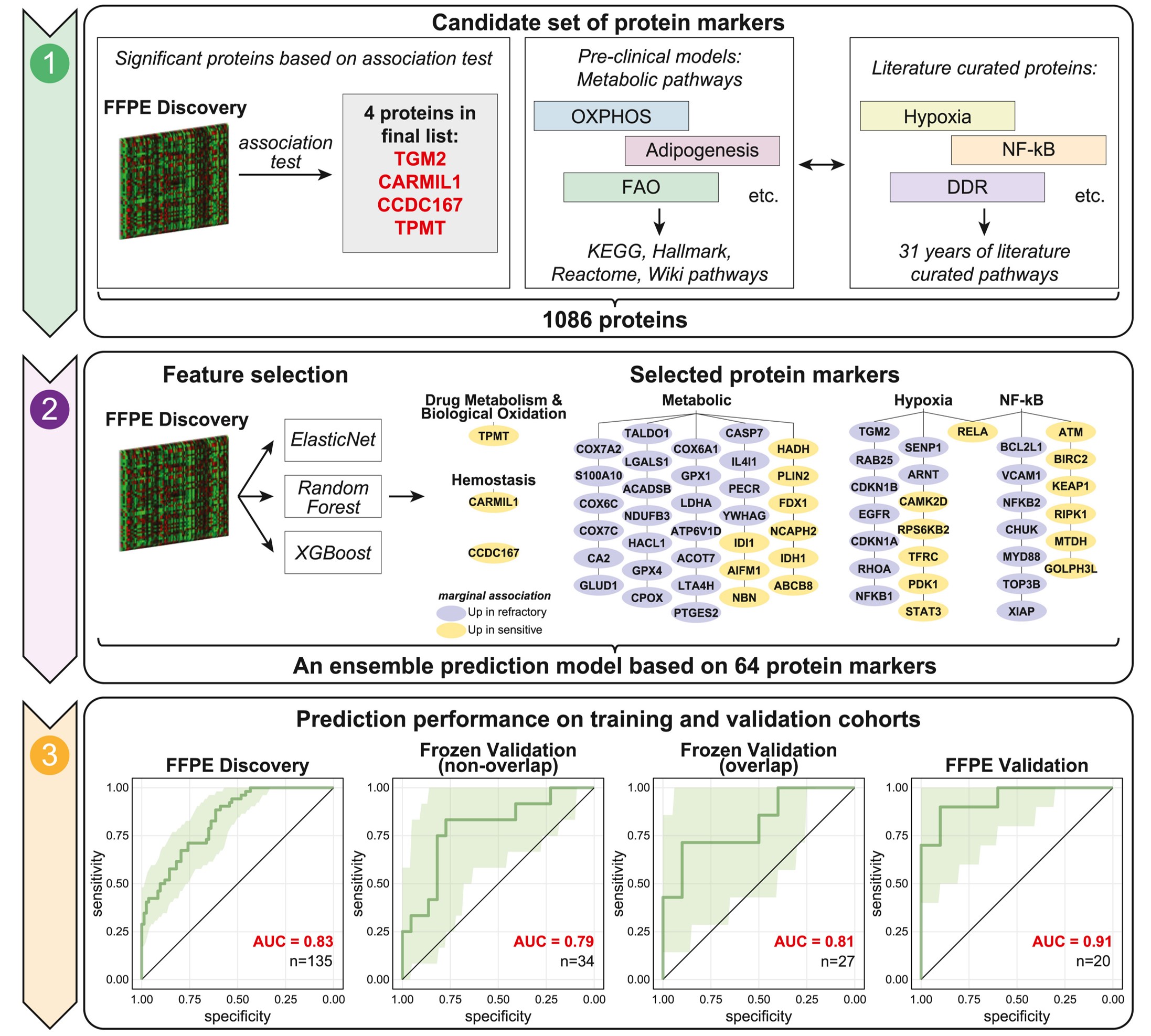In an effort recently published in Cell, CPTAC researchers aimed to identify patients with high-grade serous ovarian cancer (HGSOC) who may not respond to standard therapies. At present, there is no way to distinguish refractory from sensitive HGSOCs prior to therapy. As a result, patients with treatment-refractory disease at diagnosis (10-20%) often undergo standard-of-care platinum chemotherapy without benefit. Identifying these patients at diagnosis would limit toxicities and save critical time--study leader Amanda Paulovich, MD, PhD wrote, “If we can identify patients who are unlikely to respond to standard treatment, clinicians could help them pursue a clinical trial instead.”
Using a combination of advanced mass spectrometry and computational approaches, the team was able to analyze proteins and genetic markers from 242 total samples. As a result, they identified a 64-protein pattern that could reliably predict (98%) whether a subset of ovarian tumors would respond to standard therapies. Additionally, researchers shed light on a notable association between lack of Chr17 loss-of-heterozygosity and chemo refractoriness.
The workflow and results of the proteomic prediction model can be seen on the right. 1.) An initial candidate set of markers included treatment response-associated proteins and protein pathways 2.) Selection was performed using machine learning models resulting in the identification of 64 proteins of interest 3.) A prediction model based on the 64 protein markers was derived and tested on independent cohorts.
In the course of the study, researchers also identified five subtypes of HGSOC based on pathway protein expression. Researchers propose that these “tumor clusters” may represent different mechanisms of refractoriness and suggest potential subtype-specific treatment approaches including immune therapies, TGFβ inhibitors, and metabolic inhibitors. Dr. Paulovich, passionate about improving outcomes for patients with this disease, wrote “I know from my own experiences caring for cancer patients that they have highly variable responses to the same cancer therapies, where one patient’s tumor will shrink, and another won’t change. My goal is to better predict how tumors will respond before patients undergo treatment so they don’t have to waste their time on treatments that won’t work and so that we can identify treatments that will work.”
This study represents a large collaborative effort which included multiple CPTAC teams from the Fred Hutchinson Cancer Center, Winthrop P. Rockefeller Cancer Institute, Baylor College of Medicine, University of Michigan, Icahn School of Medicine at Mount Sinai, and NYU Langone Medical Center. The data from this study is readily accessible at the PDC, here.
To read the full publication, click here.

